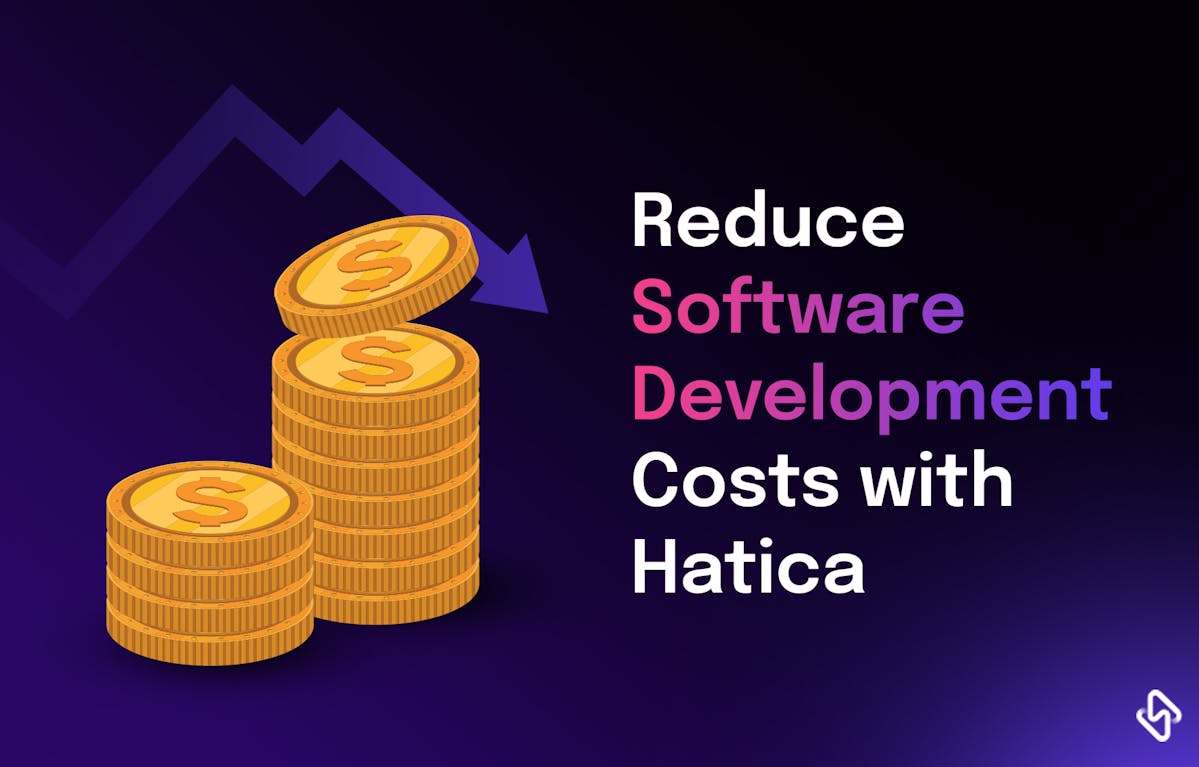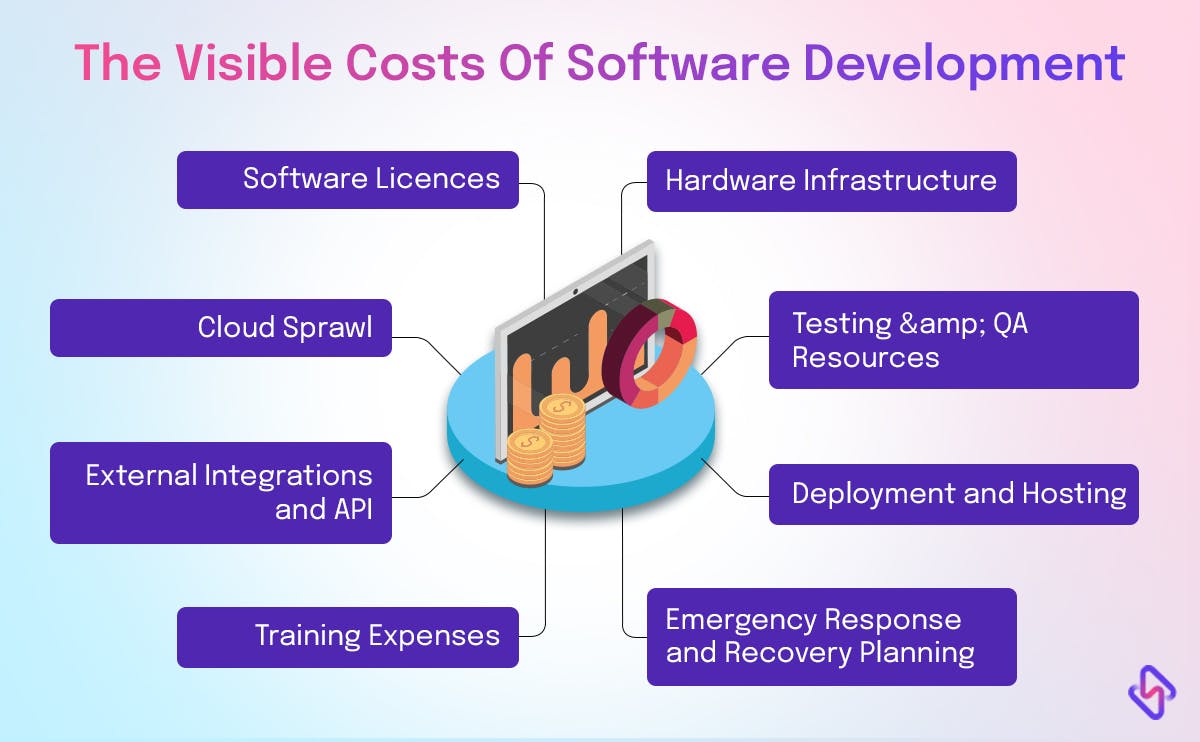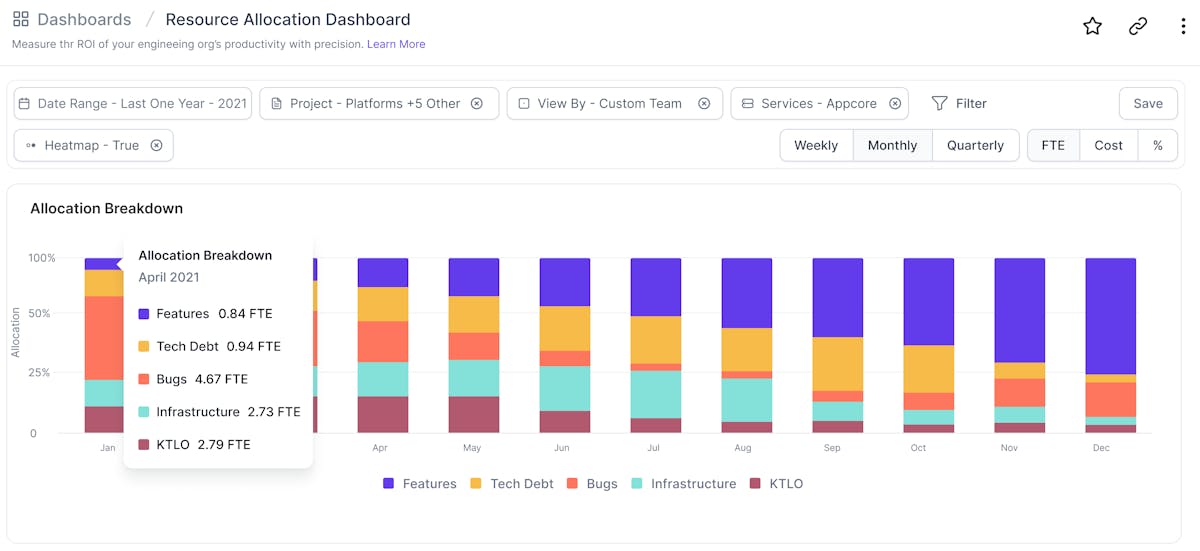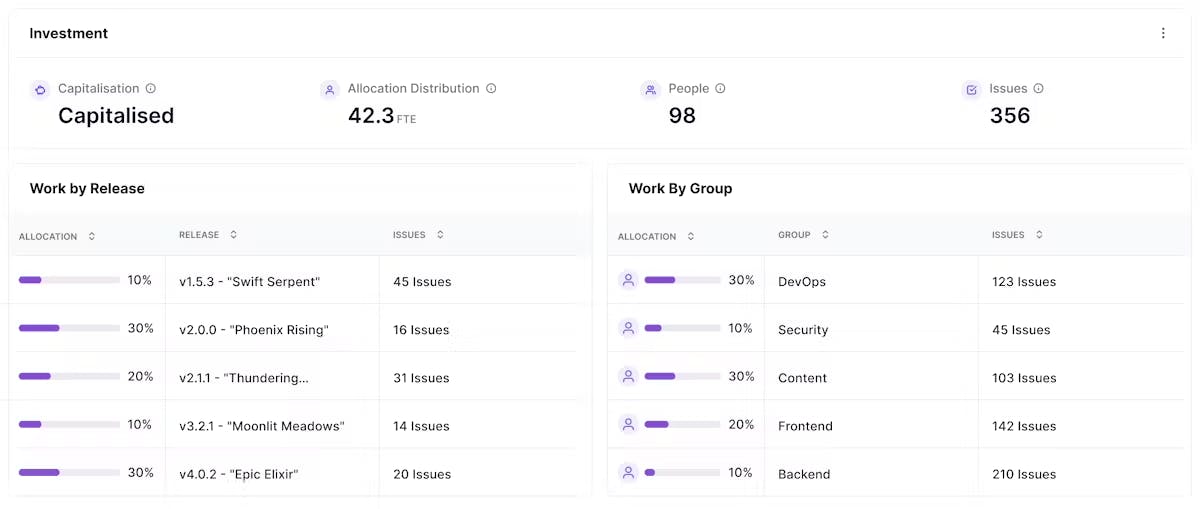Most of these direct costs can be optimized by being truly agile, automation, deploying CI/CD pipelines for development, and leveraging open source tools to cut license costs.
However, they're just the tip of the iceberg. The more prominent hidden costs are difficult to quantify, and lack a data-driven approach to mitigate them.
Here is a nuanced approach to reducing the hidden and invisible costs of development tormenting engineering teams. But first let’s see what really constitutes these invisible costs:
The Hidden Costs of Software Development
While it’s easier to quantify departmental spendings like FTE expenditure, salaries, software licenses, cloud cost; the inefficiencies in the SDLC process lack a clear price tag, they are often overlooked, and are definitely more than what an engineering team bargained for.
Here are a few of these “hidden” costs injuring your engineering sustainability:
1. Code Churn, Rework, and Poor Software Quality
The DORA team assessed the cost of rework, and unaccounted code churn on engineering teams. Fixing existing poor-quality code is setting a medium engineering team back
$4.7M a year, while for large engineering teams, the rework costs run as high as $93.7M.
Code churn is often seen as expected, and healthy. However, once a rework above 20% is definitely a red flag for your engineering costs.
High rework costs is a clear indication of low software quality, poor class design, incomplete code reviews, unstable codebase, high technical debt, and a dent on customer experience.
2. Technical Debt
CTOs are already allocating their 10-20% of the new project budget towards technical debt– an outcome of shortcuts and tradeoffs development teams make to meet deadlines.
Band-aid code solutions to deliver faster introduce long-term complexities, and can be a massive roadblock to engineering productivity. As of now, your developers are spending 17.3 hours per week dealing with tech debt, closing to north of $85B in annual losses. And we haven’t started quantifying the opportunity cost yet!
Legacy infrastructure is again about bleeding money here. Either CTOs start hiring for COBOL developers at average salary, or do away with aging infrastructure completely (spoiler alert: both are nearly impossible).
High technical debt, and unmanageable legacy systems means teams are consistently grappling with high-risk code, often resulting in frequent rework and downtime, especially when the release date is around the corner. It’s a vicious cycle for CTOs to be in.
3. Outdated Cost Capitalization, and Reporting
In 2021, 33% of engineering teams automated between 50% to 75% of their workflows. However, the figure is highly dismal when it comes to automating software cost capitalization, the process is mostly manual, usually undertaken by engineering managers, and finance teams to calculate FTE efforts, and resource breakdown, and is a sheer wastage of engineering resources.
CTOs, and CFOs are increasingly at a crossroads because of the lack of a single source of truth in collating, analyzing, and verifying engineering data. Moreover, the ambiguity in GAAP rules, and Guesswork, anecdotal evidence, and conformity bias in feeding datasets makes the entire cost capitalization process less feasible, and more burdensome; some business execs even seem to skip the practice despite its long term impacts on financial sustainability.
4. Low Planning Accuracy
The industry average for planning accuracy is around 50%. That means engineering teams only deliver half of what they plan for in an interaction. Engineering teams across verticals face the heat of lack of accuracy in forecasting project delivery. Most CTOs we know struggle to know the answers for:
- What is the timeline for this release?
- Can we prioritize Feature A over B?
Answering these questions becomes complex as scope creep, gold plating requirements, and a broken sprint process fog project delivery workflows, and timelines. A lack of objective, data-driven project delivery projection means resource misallocation, bottlenecks in the delivery process, communication breakdown between project owners, and engineering teams, a dent on operational integrity, and overall high development costs.
5. SaaS Sprawl
In 2023, CTOs lost $750 million to software features that were purchased, but never used by their engineering team.
Owing to the rise of complex engineering systems, an average sized team is using around 70-100 digital tools. We haven’t yet started counting the additional burden of cloud services, and sprawl where your team might keep running the tab due to ShadowIT, decentralized decision-making, and lack of visibility into engineering processes. There are enough horror stories of companies facing massive budget overruns because of one small mistake with cloud provisioning.
Redundant apps cost too much to businesses, and even overwhelming the entire engineering team, and weighing down heavily on overall data security, thanks to Shadow IT again.
SaaS sprawl becomes uncontrollable, chaotic, and financially draining when executives lack a 360 degree view of their engineering resources, and usage, and that’s how redundant services begin to crop up.
Besides these obvious costs associated with a broken delivery process, the most coveted factor that stays hidden and yet influences the overall costs is low developer productivity.
Cost Storm Alert ⚠️: Low Engineering Productivity
Today, businesses are fighting wars on too many fronts: high competition, security breaches, trade regulations, and economic uncertainty. But here's the deal: how these companies use their developers will take center stage in determining their future success. As per Stripe, high engineering productivity can add upto $3T in global GDP in the next five years. In the same survey, CTOs, and engineering leaders have agreed on investing in developers help them:
- Accelerate time to market
- Improve product differentiation
This is an opportunity cost that most CTOs often overlook when it comes to improving their bottom line, and cutting down on the financial drain.
Your developers bind the engineering systems together. Investment in their overall well-being and developer experience go a long way in fighting high software development costs.
A Prerequisite to Combat Skyrocketing Development Costs: High Work Visibility
Reducing software development costs isn’t a sprint; but a marathon that will ask from you to drill deeper into broken parts of engineering processes. But how? Most engineering evangelists are silent about it.
It is simple: You cannot build a cost saving strategy without understanding what’s igniting these expenses in the first place. It’s about attaining higher visibility into engineering workflows.
360 degree visualization of both health, and depth of engineering systems is your foundation of data-driven decision making, improved bottom line, and an optimized TCO.
Reduce Software Development Costs With Hatica
Despite knowing that engineering costs money, many VPE, and CTOs struggle to put a concrete dollar figure on the total budget for their software development projects. I've spoken with dozens of them, and for many, this was the first time they actually saw a grand total cost breakdown.
Like I always say:
Not knowing exact dollar figures that go into your engineering is like running a business with one eye closed.
This lack of visibility into hidden costs often leads to underestimating the true financial needs of software development projects. And precisely here Hatica comes into the picture. Hatica’s engineering management platform integrates directly with your engineering stack to pull data around 130+ engineering metrics, and enable work visibility to assess engineering health.
Rightsizing is the approach CTOs take to minimize unused resource costs. The biggest challenge to adopting a rightsizing strategy is lack of actionable data. It will be tough to allocate resources if you can't clearly conceptualize your resource and task performance against the goals and limits set.
Hatica-led visibility allows engineering teams to understand developmental bottlenecks, emulate success patterns, and even undergo process reengineering for continuous improvement, and overall cost reduction.
Effective resource allocation, and management save your bottom line from draining further. With Hatica, align engineering efforts with business priorities. Visualize how the team is moving the business forward, and the real ROI of current engineering investments.










